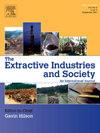关键矿物开采与美国原住民主权:美国锂、铜、锑、镍和石墨开采案例研究比较
IF 3.6
2区 社会学
Q2 ENVIRONMENTAL STUDIES
Extractive Industries and Society-An International Journal
Pub Date : 2024-10-24
DOI:10.1016/j.exis.2024.101557
引用次数: 0
摘要
由于殖民主义和定居的历史模式,低碳能源转型所需的许多剩余未开发矿产资源都位于对美国原住民部落和土著社区具有历史、祖先或文化意义的土地上,并且靠近环境敏感区域。虽然有些采矿项目发生在私人土地上,但大多数采矿项目都是针对美国联邦政府拥有的土地提出的,并由多个机构(美国林务局、土地管理局等)管理,其目标涵盖从自然资源开发到文化资源保护等各个领域。本研究通过比较案例研究的方法,对寻求开发这些资源的采矿项目进行了分析。这些案例代表了从绿地开发到历史矿址的各种项目类型。矿产资源项目面临着不同程度的社会阻力,在获得许可审批方面继续面临挑战,或面临诉讼,这些都可能成为开发不确定性的来源。这些摩擦也是美国原住民部落和环境保护团体减少对自然资源影响的重要时刻。解决双方的不确定性对国家建设至关重要。在所有这些项目中,诉讼频繁且持续不断的主要原因之一就是从各种相互竞争的利益中找到一个共同点,而这仍然是可能的。虽然目前有关采矿的立法中包含有关部落参与的条款,但最近的立法提案中包含了进一步的行动,作为更具包容性的方法的一部分,这种方法强调早期谈判、获得同意的途径,甚至是各种形式的伙伴关系。这将有助于在国内以保护环境和维护部落社会价值的方式解决国家在矿产方面面临的一些重大挑战。本文章由计算机程序翻译,如有差异,请以英文原文为准。
Critical minerals mining and Native American sovereignty: Comparing case studies of lithium, copper, antimony, nickel and graphite mining in the United States
Owing to the historical patterns of colonialism and settlement, many of the remaining undeveloped mineral resources needed for a low-carbon energy transition are located on lands that have historic, ancestral, or cultural significance to Native American Tribes and Indigenous communities, as well as are near environmental-sensitive areas. While some mining projects occur on private land, the majority of mining projects are proposed for lands owned by the United States Federal Government and managed by multiple agencies (United States Forest Service, Bureau of Land Management etc.) with goals across the spectra from natural resource development to cultural resource conservation. Through a comparative case study approach, this study analyzes mining projects seeking to develop these resources. The cases represent a mix of project types from greenfield development to historic mines sites. Mineral resource projects have faced varying degrees of social resistance, continue to face challenges with securing permitting approvals or face litigation, and this can be a source of development uncertainty. These frictions are also important moments for Native American Tribes and environmental conservation groups to lessen impacts on natural resources. Resolving the uncertainties on both sides is crucial for nation building. One of the primary reasons for frequent and sustained litigation among all these projects is establishing a common ground from various competing interests, which is still possible. While current legislations on mining have provisions concerning Tribal engagement, recent legislative proposals contain further action which is needed as part of a more inclusive approach that emphasizes early negotiation, pathways to consent and even various forms of partnerships. This will help resolve some of the nation's critical minerals challenges domestically in a way that protects the environment and preserve Tribal societal values.
求助全文
通过发布文献求助,成功后即可免费获取论文全文。
去求助
来源期刊

Extractive Industries and Society-An International Journal
ENVIRONMENTAL STUDIES-
CiteScore
6.60
自引率
19.40%
发文量
135
 求助内容:
求助内容: 应助结果提醒方式:
应助结果提醒方式:


